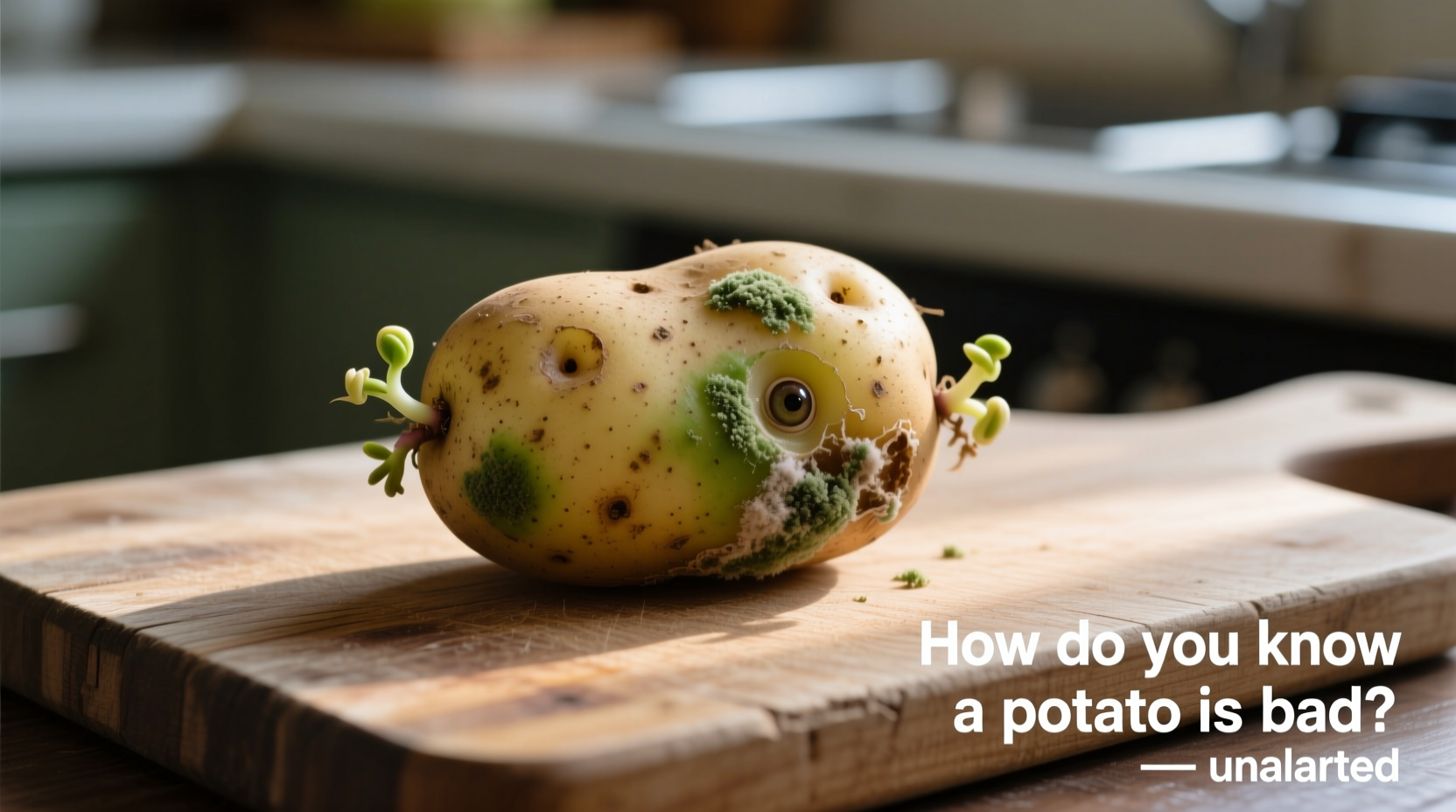Spot spoiled potatoes by checking for soft or mushy spots, green discoloration, strong unpleasant odors, excessive sprouting, or visible mold. Potatoes with minor sprouts or small green patches can often be salvaged by cutting away affected areas, but discard any with extensive decay or a bitter taste.
Spot Bad Potatoes Before They Spoil Your Meal
Nothing ruins dinner plans faster than reaching for potatoes only to discover they've gone bad. As a home cook, knowing exactly how do you know a potato is bad saves money, reduces food waste, and prevents potential foodborne illness. This guide delivers the precise visual, textural, and olfactory indicators you need to confidently assess potato quality.
Your Potato Quality Assessment Checklist
Follow this systematic approach the moment you pull potatoes from storage. This sequence mirrors how professional kitchens evaluate produce before preparation.
Visual Inspection: What to Look For
Start with a thorough visual examination under good lighting. Rotate each potato to check all sides. The most reliable visual indicators of spoilage include:
- Green patches - Caused by light exposure producing solanine (a natural toxin)
- Dark spots or blemishes that feel soft when gently pressed
- Excessive sprouting with long, thick sprouts (not just small "eyes")
- Mold growth appearing as fuzzy white, green, or black patches
- Shriveling or wrinkling beyond normal texture
| Visual Indicator | Safe to Eat? | Action Required |
|---|---|---|
| Small green spots (under 1 inch) | Yes | Cut away generously with 1/4 inch margin |
| Extensive green discoloration | No | Discard entire potato |
| Few small sprouts | Yes | Remove sprouts and eyes completely |
| Thick, long sprouts | No | Discard entire potato |
| Surface mold | No | Discard entire potato (mold penetrates deeply) |
This assessment method aligns with USDA food safety recommendations for evaluating produce quality. According to the USDA Food Safety and Inspection Service, "when in doubt, throw it out" remains the safest approach for questionable produce.
Texture Test: The Critical Touch Assessment
After visual inspection, perform a gentle texture check. Properly stored potatoes should feel firm throughout. Warning signs include:
- Soft or mushy areas - Indicate advanced decay beneath the skin
- Hollow feeling when gently squeezed
- Wet spots that leave residue on your fingers
- Extreme hardness in specific spots (can indicate internal rot)
Professional chefs know that texture changes often precede visible spoilage. As potatoes decay, their starch converts to sugar then to simpler compounds, creating those telltale soft spots. If more than 25% of the potato feels soft, discard it entirely.
Smell Test: Your Final Safety Check
The olfactory test provides definitive evidence of spoilage. Fresh potatoes have an earthy, slightly sweet aroma. Warning signs include:
- Vinegar-like sourness - Indicates bacterial fermentation
- Moldy or musty odor - Even without visible mold
- Chemical or bitter smell - Sign of significant solanine production
- Complete absence of aroma - Can indicate advanced decay
If your potato passes visual and texture tests but smells off, trust your nose and discard it. The FDA notes that "odor changes often signal spoilage before visible signs appear" in root vegetables.

Understanding Potato Spoilage Timeline
Potatoes don't spoil overnight. Understanding their deterioration process helps you catch problems early:
- Days 1-7: Ideal storage conditions maintain quality
- Weeks 2-3: Sprouting begins; minor skin wrinkling may appear
- Weeks 4-6: Green patches develop with light exposure; texture starts softening
- Weeks 6-8: Significant sprouting, soft spots, and potential mold growth
- 8+ weeks: Advanced decay with high solanine levels in affected areas
This timeline varies based on storage conditions. The Oregon State University Extension Service confirms that proper storage can extend potato shelf life by 30-50% compared to room temperature storage.
Potato Storage Mistakes That Accelerate Spoilage
Many "bad potatoes" result from improper storage rather than actual spoilage. Avoid these common errors:
- Refrigeration - Cold temperatures convert starch to sugar, creating off-flavors
- Plastic bags - Trap moisture that promotes mold growth
- Exposure to light - Causes greening and solanine production
- Storing with onions - Onions release gases that accelerate potato sprouting
- Washing before storage - Excess moisture encourages decay
When Can You Salvage a Questionable Potato?
Not all imperfect potatoes need discarding. Follow these guidelines for safe salvage:
- Minor sprouting: Remove sprouts and eyes completely with a deep cut
- Small green spots: Cut away affected area with generous 1/4 inch margin
- Surface blemishes: Peel deeply around affected areas
Never attempt to salvage potatoes with:
- Multiple soft spots
- Strong unpleasant odors
- Extensive mold growth
- Bitter taste during cooking
Remember that solanine, the toxic compound in green potatoes, isn't destroyed by cooking. If you detect bitterness while preparing potatoes, stop cooking immediately and discard the entire batch.
Proper Potato Storage for Maximum Freshness
Extend your potatoes' shelf life with these professional storage techniques:
- Store in cool, dark place between 45-50°F (7-10°C)
- Use breathable containers like paper bags or wicker baskets
- Keep away from heat sources and direct sunlight
- Store separately from onions and other ethylene-producing produce
- Check weekly and remove any spoiling potatoes immediately
These methods can keep potatoes fresh for 2-3 months. For long-term storage, consider learning proper curing techniques that further extend shelf life.
Special Considerations for Different Potato Types
Not all potatoes spoil at the same rate. Understanding these differences helps with proper assessment:
- Russet potatoes: More prone to drying out but resist greening better
- Red potatoes: Thinner skin makes them more susceptible to bruising
- Sweet potatoes: Require warmer storage and show different spoilage signs
- Fingerling potatoes: Higher moisture content means faster spoilage
When evaluating specialty varieties, adjust your expectations for normal appearance. Some heirloom varieties naturally have bumps or irregular shapes that shouldn't be confused with spoilage.











 浙公网安备
33010002000092号
浙公网安备
33010002000092号 浙B2-20120091-4
浙B2-20120091-4